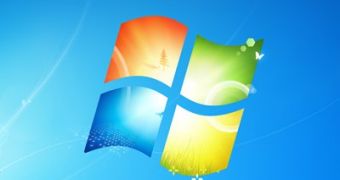Some of you might not remember this, but Intel was an illustrative example of corporations that turned their back on Windows Vista in 2007, as opposite to AMD, which was quick to embrace Windows XP’s successor. Not the same can be said when it comes down to the latest iteration of the Windows client. Intel has assessed Windows 7 extensively, comparing it with Windows XP SP3, and found that the successor of Vista was superior. And nothing speaks better than Intel’s stance on Windows 7 than the fact that the CPU maker upgraded in excess of 100,000 machines from XP SP3 starting in early 2010.
“Working with Microsoft made it possible for us to perform a detailed early evaluation of the operating system and to provide feedback to Microsoft from the perspective of a large enterprise,” stated John Gonzalez, Operating System Product Line Manager for Intel.
Tests performed by Intel started with performance comparisons in relation to XP SP3, and went on to try out stability, user acceptance, power consumption, and application readiness. At the same time, the Santa Clara, California-based processor manufacturer also looked as how the adoption of Windows 7 would impact total cost of ownership and found that the new operating system would deliver consistent cutbacks on spending.
“A preliminary conservative TCO analysis of Windows 7 showed potential net present value of $11 million over a five-year refresh cycle,” said Gonzalez. According to Microsoft, there are two main aspects, which contribute to driving down TCO, namely lower help-desk costs that is the result of increased stability and built-in troubleshooting tools, but also diminished desktop PC energy consumption.
Boosted performance and enhanced stability contributed to Intel’s decision to embrace Windows 7, along with positive feedback and the improved management capabilities of the operating system. “We benefited from the new manageability and tuning capabilities in Windows 7, which are designed to optimize performance,” Gonzalez added. “Even though we were testing an early release of Windows 7, we saw that the operating system was generally more stable than the production release of Windows XP that we currently use, with fewer users experiencing stop errors.”
Less than half a year after the GA of Windows 7, Microsoft had already sold over 90 million copies of the operating system, and the company has undoubtedly passed the 100 million mark by now. And although the software giant has been shy when it comes to outlining corporate uptake of Windows 7, with Intel deciding to upgrade to the OS ahead of SP1, the future is certainly looking bright for Microsoft.
Microsoft Windows 7 90-Day Eval VHD is available for download here.
Another Windows 7 RTM Enterprise 90-Day Evaluation is available for download here.
Windows 7 RTM Starter Edition, 100-Screenshot Gallery
Windows 7 RTM Home Basic 110-Screenshot Gallery
Windows 7 RTM Home Premium 120-Screenshot Gallery
Windows 7 RTM Professional 110-Screenshot Gallery
Windows 7 RTM Enterprise 100-Screenshot Gallery

 14 DAY TRIAL //
14 DAY TRIAL //